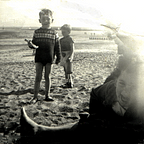Kerensky — Part 2: Exile
‘…. the Wandering Russian, spending most of his life in exile, dwelling always on but one year of his life: 1917!’ Interview with Kerensky in New York, 1965
17 May, 1918
The Washington Post publishes a sensational story about Alexander Kerensky, now missing for six months. He has left Russia and is on his way to the US under assumed name.
The following day the Indiana Evening Gazette adds detail. A relative is travelling from Indiana to meet Uncle Alexander in New York. Oh no he’s not, the Washington Post reports in a new twist on 24 and 26 May. They have Kerensky moving into a rented house in DC.
There is a gloomier take in the same newspaper on 27 May. Passengers arriving at Atlantic Port from Russia, via Stockholm, are saying that Kerensky isn’t moving anywhere. He has died whilst in hiding.
Other theories come in thick and fast. Kerensky ‘safe in Christiania:’: no wait, he is in Norway en route to France…
This is before Kerensky leaves Russia.
In fact the final stages of his escape into exile are even more improbable. They involve a British visa on a fake Serbian passport and a mysteriously obtained Serbian army uniform. With this implausible disguise, Kerensky joins a detachment of Serbian soldiers on a 10-day rail journey to the Arctic port of Murmansk.
From there, he boards a French warship, transfers to a British trawler and eventually lands at the Scottish port of Thurso in mid-June.
The British are not thrilled to see him. Foreign office minister, Arthur Balfour considers Kerensky ‘discredited’ and suggests shipping him to the United States, where he will be ‘much less embarrassing to the Allied cause’. The Wilson Administration quickly nix that option.
Kerensky is no longer a significant player — just another disgruntled emigre with a story to tell.
When Kerensky leaves Russia he is just 36. The early stages of his Odyssean exile will take him to Estonia, Paris, London and — improbably — rural Kent. He does not publicly take sides in the Civil War but urges the Allies to intervene. He has high hopes of a triumphant restoration.
Lenin dies in 1924 but his regime solidifies. Kerensky’s star wanes still further. The upside is that his diminished status increases his personal safety. The new Soviet sheriff systematically eliminates leading Bolsheviks . and even sends an assassin to see off Trotksy.
Killing Kerensky is not worth the trouble. He will be the only key participants in both 1917 revolutions to outlive Stalin.
The remaining fifty-two years will be spent writing and rewriting his memoirs. Plus churning out pamphlets. And feuding with fellow emigres.
There was no shortage of Kerensky haters. Many on the right held him personally liable for the rise of the Bolsheviks.
‘In 1923 two young scions of the Russian nobility ….informed me that they had spent the afternoon reviling Kerensky. They had discovered that he was staying in the Hotel Paris in Prague. They had hired the room next to his and had spent the afternoon shouting “dirty dog” and other abuse through the partitions.’ Robert Bruce Lockhart Memoirs of a British Agent
In March 1927, Kerensky was slapped in the face on the stage of the Century Theater in New York by a woman pretending to present him with a bouquet. She blamed him for the death of her brother and her fiancé, who had been officers in the Russian army. As the woman was led away, Kerensky was defiant in front of a hostile audience.
‘Oh, you poor little monarchists. You have lost your manhood. Not one of your ex‐officers dares to come upon this stage! Instead you send a woman.’
Separated from his first wife before he goes into exile, Kerensky only his children again when the family finally escapes Russia in 1921. They settle in England — one becomes a prominent dance critic.
In the 1930s Kerensky remarries and moves to Paris, only for the Nazis to drive him out in 1940. He opposes the Nazi-Soviet Pack but Barbarossa inspires a change of tack. Kerensky writes to Stalin offering his support for the Great Patriotic War effort. He does not receive a reply.
By now he has settled in the US, as promised two decades previously by the Washington Post. In 1946 travels with his second wife, Nell, to spend her final years Brisbane, Australia.
Back in the USA he makes a reasonable living as a (minor) celebrity history professor — students at Stanford were entertained to discover that the old Russian guy was the one in their text-books. He dabbles in radio and TV punditry but there is limited interest
Post-Stalin Soviet authorities seem to forget about him completely. They are astonished when he makes a public statement regarding the invasion of Czechoslovakia in 1968. That guy is still alive?
In 1970 The New York Times announces the death of Alexander Kerensky. In a brief report the describe him as the man ‘at the vortex of the Russian Revolution’ but suggest that ‘the power he exercised for little more than four months dribbled from his grasp.’
His death awakens old enmities. The Russian Orthodox Church, still sore about 1917, refuses to bury him in consecrated ground. His body is flown to London, where he is interred in a family plot in Putney Vale Cemetery.
A funeral service is also held on Madison Avenue in New York.Most of the 350 mourners are Russian, as are the songs and prayers. Oscar Levin. Levin, who left Russia in 1911, pays a touching tribute to his fellow emigre.
{he} travelled for more than half a century all … on a little, tattered identification paper which described him as stateless… {but his terms in office was} a glorious spring in the wintry life of his country.”
